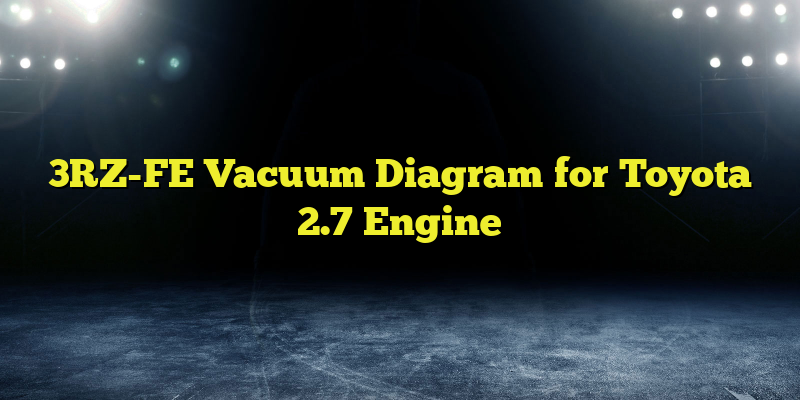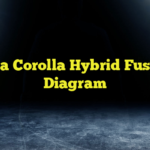The 3RZ-FE is a 2.7-liter four-cylinder gasoline engine produced by Toyota. It is commonly found in various Toyota models, including the Tacoma, 4Runner, and T100. The engine’s performance and efficiency depend on the proper functioning of its vacuum system, which plays a crucial role in various engine operations.
What is a Vacuum System?
A vacuum system is a network of hoses, valves, and other components that create and control vacuum pressure within an engine. It helps regulate various engine functions, including fuel delivery, emissions, and power brake assistance. Understanding the vacuum system is essential for proper engine maintenance and troubleshooting.
Components of the 3RZ-FE Vacuum System
The 3RZ-FE vacuum system consists of several key components, each serving a specific purpose. These components include:
- Vacuum Hoses: These rubber hoses connect different parts of the vacuum system, allowing the transmission of vacuum pressure.
- Vacuum Pump: The vacuum pump generates vacuum pressure and supplies it to various engine components.
- Vacuum Switching Valve (VSV): The VSV controls the flow of vacuum pressure to different engine systems based on input from the engine control unit (ECU).
- Throttle Body: The throttle body regulates the airflow into the engine and has a vacuum port for vacuum pressure.
- Vacuum Reservoir: The vacuum reservoir stores excess vacuum pressure for future use.
Understanding the 3RZ-FE Vacuum Diagram
The 3RZ-FE vacuum diagram is a visual representation of the vacuum system’s hose routing and component connections. It provides a clear understanding of how vacuum pressure flows through the engine and helps identify potential issues or leaks. Referencing the vacuum diagram is crucial when performing maintenance or troubleshooting tasks.
Common Issues and Troubleshooting
Problems in the vacuum system can cause various engine-related issues. Here are some common problems and troubleshooting steps:
1. Vacuum Hose Leaks:
A vacuum hose leak can disrupt the vacuum pressure and affect engine performance. To identify a leak, inspect all vacuum hoses for cracks, loose connections, or signs of wear. Replace any damaged hoses and ensure proper connection.
2. Faulty Vacuum Pump:
A malfunctioning vacuum pump can result in insufficient vacuum pressure. Test the vacuum pump using a vacuum gauge to ensure it is generating the required pressure. If the pump is faulty, it needs to be replaced.
3. Defective Vacuum Switching Valve (VSV):
If the VSV is not functioning correctly, it can disrupt the flow of vacuum pressure to different engine systems. Test the VSV using a multimeter or consult a professional for proper diagnosis and replacement if necessary.
Frequently Asked Questions about the 3RZ-FE Vacuum Diagram for Toyota 2.7 Engine
What is the purpose of the vacuum system in the 3RZ-FE engine?
The vacuum system in the 3RZ-FE engine is responsible for regulating various engine functions, including fuel delivery, emissions control, and power brake assistance.
How can I identify a vacuum hose leak?
To identify a vacuum hose leak, inspect all hoses for cracks, loose connections, or signs of wear. You can also use a smoke machine or soapy water to detect leaks by observing bubbles or smoke escaping from the hoses.
Can I replace a faulty vacuum pump myself?
Replacing a faulty vacuum pump in the 3RZ-FE engine requires some mechanical knowledge and tools. If you have the necessary skills and equipment, you can replace it yourself. However, if you are unsure or inexperienced, it is recommended to seek professional assistance.










